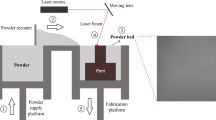Abstract
Ceramic tile industry is facing significant challenges in the industrial revolution 4.0. Most of the ceramic tile factories are under backward technologies, especially in the developing countries. Due to their complicated process and current technologies, there are many surface defects occurring on the final products. Classifying and grading the product still relies on humans which has caused many problems. Hence, developing an optimal model to deal with this surface defect detection and classification automatically is necessary for these companies. This study aims to propose a two-dimensional genetic algorithm-based convolutional neural network (2DG-CNN) which can automatically generate an optimal convolutional neural network (CNN) for detecting and classifying the defect products. In particular, a general CNN structure is firstly determined including the number of convolution layers, pooling layers, and fully connected layers. A two-dimensional chromosome is designed to represent a CNN model efficiently. In addition, a novel matrix crossover is developed to create more diversified offspring. A database of ceramic tile surface images is constructed to validate the proposed approach. The 2DG-CNN was compared with the other well-known algorithms. The results have shown the efficiency of the proposed approach.









Similar content being viewed by others
References
Huynh NT (2022) Status and challenges of textile and garment enterprises in Vietnam and a framework toward industry 3.5. Int J Logistics Res Appl 1–12
Hanzaei SH, Afshar A, Barazandeh F (2017) Automatic detection and classification of the ceramic tiles’ surface defects. Pattern Recogn 66:174–189
Huynh NT, Chien CF (2018) A hybrid multi-subpopulation genetic algorithm for textile batch dyeing scheduling and an empirical study. Comput Ind Eng 125:615–627
Huynh NT, Huang YC, Chien CF (2018) A hybrid genetic algorithm with 2D encoding for the scheduling of rehabilitation patients. Comput Ind Eng 125:221–231
Sanghadiya F, Mistry D (2015) Surface defect detection in a tile using digital image processing: Analysis and evaluation. Int J Comput Appl 116(10):33–35
Jajal B, Dobariya AR (2021) Leveraging machine vision for automated tiles defect detection in ceramic industries. In: Emerging technologies in data mining and information security, pp 725–733
Karimi MH, Asemani D (2014) Surface defect detection in tiling Industries using digital image processing methods: analysis and evaluation. ISA Trans 53(3):834–844
Badmos O, Kopp A, Bernthaler T, Schneider G (2020) Image-based defect detection in lithium-ion battery electrode using convolutional neural networks. J Intell Manuf 31(4):885–897
Tabernik D, Šela S, Skvarč J, Skočaj D (2020) Segmentation-based deep-learning approach for surface-defect detection. J Intell Manuf 31(3):759–776
Chen H, Pang Y, Hu Q, Liu K (2020) Solar cell surface defect inspection based on multispectral convolutional neural network. J Intell Manuf 31(2):453–468
Fang F, Li L, Gu Y, Zhu H, Lim JH (2020) A novel hybrid approach for crack detection. Pattern Recogn 107:107474
Krizhevsky A, Sutskever I, Hinton GE (2012) Imagenet classification with deep convolutional neural networks. Adv Neural Inf Process Syst 25:1097–1105
LeCun Y, Bengio Y, Hinton G (2015) Deep learning. Nature 521(7553):436–444
Lin H, Li B, Wang X, Shu Y, Niu S (2019) Automated defect inspection of LED chip using deep convolutional neural network. J Intell Manuf 30(6):2525–2534
Sainath TN, Mohamed AR, Kingsbury B, Ramabhadran B (2013) Deep convolutional neural networks for LVCSR. In: 2013 IEEE international conference on acoustics, speech and signal processing, pp 8614–8618
Sun Y, Xue B, Zhang M, Yen GG, Lv J (2020) Automatically designing CNN architectures using the genetic algorithm for image classification. IEEE Trans Cybern 50(9):3840–3854
Li H, Yuan D, Ma X, Cui D, Cao L (2017) Genetic algorithm for the optimization of features and neural networks in ECG signals classification. Sci Rep 7(1):1–12
Zhang YH, Yuen CWM, Wong WK, Kan CW (2011) An intelligent model for detecting and classifying color-textured fabric defects using genetic algorithms and the Elman neural network. Text Res J 81(17):1772–1787
Tong DL, Mintram R (2010) Genetic Algorithm-Neural Network (GANN): a study of neural network activation functions and depth of genetic algorithm search applied to feature selection. Int J Mach Learn Cybern 1:75–87
Leung FHF, Lam HK, Ling SH, Tam PKS (2003) Tuning of the structure and parameters of a neural network using an improved genetic algorithm. IEEE Trans Neural Networks 14(1):79–88
Zhi H, Liu S (2019) Face recognition based on genetic algorithm. J Vis Commun Image Represent 58:495–502
Xie L, Yuille A (2017) Genetic cnn. In: Proceedings of the IEEE international conference on computer vision, pp 1379–1388
He K, Zhang X, Ren S, Sun J (2016) Deep residual learning for image recognition. In: Proceedings of the IEEE conference on computer vision and pattern recognition, pp 770–778
Simonyan K, Zisserman A (2014) Very deep convolutional networks for large-scale image recognition. In: Proceedings of the 32nd international conference on machine learning, Lille, France, 2015
Acknowledgements
This research is funded by Funds for Science and Technology Development of the University of Danang under Project Number B2019-DN02-64.
Author information
Authors and Affiliations
Corresponding author
Ethics declarations
Conflict of interest
The authors declare that they have no known competing financial interests or personal relationships that could have appeared to influence the work reported in this paper.
Data availability statement
The data that support the findings of this study are available on request from the corresponding author. The data are not publicly available due to their containing information that could compromise the privacy of research companies.
Additional information
Publisher's Note
Springer Nature remains neutral with regard to jurisdictional claims in published maps and institutional affiliations.
Rights and permissions
Springer Nature or its licensor (e.g. a society or other partner) holds exclusive rights to this article under a publishing agreement with the author(s) or other rightsholder(s); author self-archiving of the accepted manuscript version of this article is solely governed by the terms of such publishing agreement and applicable law.
About this article
Cite this article
Huynh, NT. An approach for classifying ceramic tile defects based on a two-dimensional Genetic CNN algorithm. Neural Comput & Applic 36, 385–397 (2024). https://doi.org/10.1007/s00521-023-09012-y
Received:
Accepted:
Published:
Issue Date:
DOI: https://doi.org/10.1007/s00521-023-09012-y




